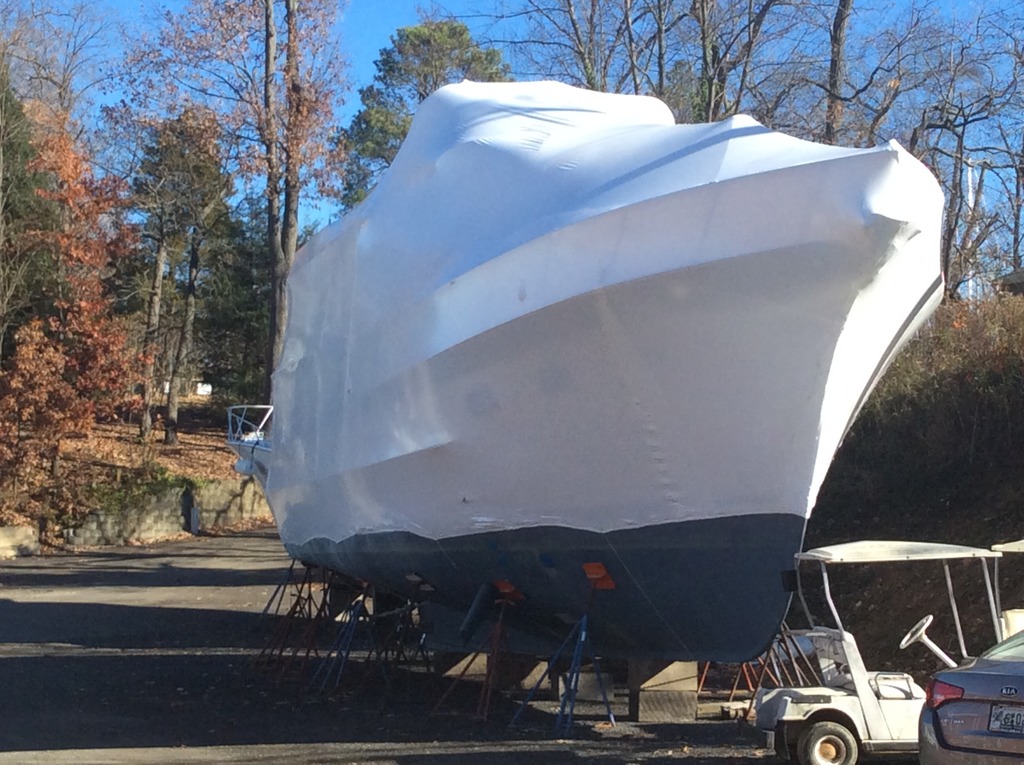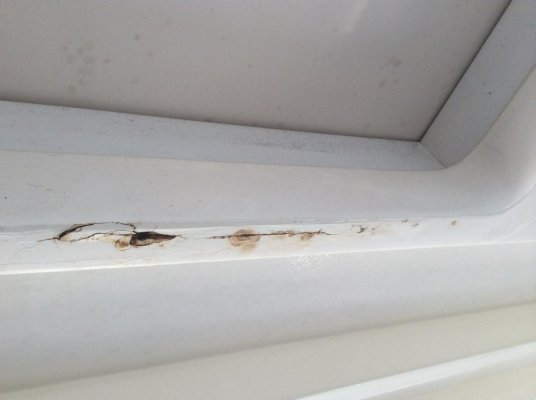This is my first season in Connecticut with the boat on the hard at Portland Riverside Marina on the Connecticut River. I agonized over shrink wrapping the boat. Here are some of the pros and cons I considered:
Pros:
1. Keeps the snow from blocking scuppers, freezing and maybe causing a flood when it thaws.
2. Keeps the snow from working a thaw, refreeze cycle on deck fittings causing water to get into the laminate.
3. Keeps winter grime away.
Cons:
1. Costs $500 to do my whole boat, $200 to do aft 1/3.
2. Limits access to the boat for winter checkups.
So, after some thought I decided to do the aft third. This deals with pro #1, which is a real issue on my boat as if the aft scupper freezes, water will get down in the bilge, dilute the antifreeze, refreeze and damage the bilge pump. OTOH replacing the bilge pump costs 1/4 of the aft shrink wrap job.
I am still subject to pro #2. I am hoping that well bedded deck fittings won't get water in them and then refreeze.
Any thoughts for next year?
David
Pros:
1. Keeps the snow from blocking scuppers, freezing and maybe causing a flood when it thaws.
2. Keeps the snow from working a thaw, refreeze cycle on deck fittings causing water to get into the laminate.
3. Keeps winter grime away.
Cons:
1. Costs $500 to do my whole boat, $200 to do aft 1/3.
2. Limits access to the boat for winter checkups.
So, after some thought I decided to do the aft third. This deals with pro #1, which is a real issue on my boat as if the aft scupper freezes, water will get down in the bilge, dilute the antifreeze, refreeze and damage the bilge pump. OTOH replacing the bilge pump costs 1/4 of the aft shrink wrap job.
I am still subject to pro #2. I am hoping that well bedded deck fittings won't get water in them and then refreeze.
Any thoughts for next year?
David



